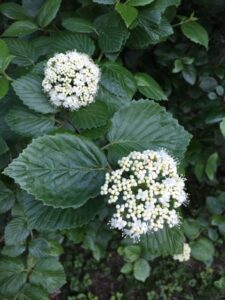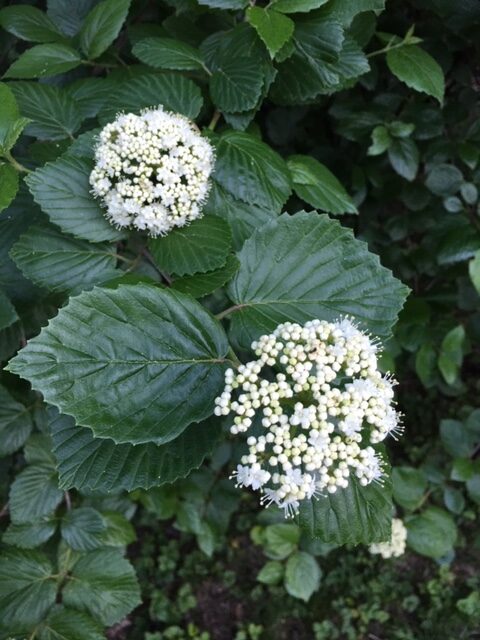June 13th
The 164th Day of the Year
Then let us, one and all, be contented with our lot;
The June is here this morning, and the sun is shining hot!
James Whitcomb Riley
Sunrise/set: 5:06/8:04
Day’s Length: 14 hours 58 minutes
Average High/Low: 81/60
Average Temperature: 71
Record High: 95 – 1902
Record Low: 42 – 1903
Weather
Today, the 14th, and the 15th are the June days most likely to produce highs in the 90s (there’s a 30 percent chance of 90s) and the 80s (a 40 percent chance of those). The remaining percentage falls to 70s (25 percent chance) and 60s or high 50s (just once in a third of a century). Skies are mostly clear to partly cloudy (completely overcast conditions coming only 15 percent of the time), and rain falls one day in four.
Natural Calendar
Painted turtles and box turtles are laying eggs. On Lake Erie, walleye fishing is usually at its best. Winter wheat in the Lower Midwest is almost all headed by this date, and about a third of the crop is turning from green to gold. The first cut of alfalfa hay is almost complete in an average year along the 40th Parallel east of the Mississippi. Most of the corn, soybeans and sunflowers have been planted. In the fields, bottle grass and timothy are sweet. Acorns have formed in the woods. Droopy lizard’s tail flowers in ponds and streams.
Daybook
1980: Multiflora roses have completed their bloom.
1981: First raspberry eaten today (the season lasted 28 days this year). A few final strawberries; their season lasted 17 days.
1983: The end of the mock orange flowers, a three-week season.
1984: First great mullein flowers along Grinnell and Wilberforce-Clifton Roads. Family of woodchucks seen, the young maybe two months old.
1985: Deep Summer already here, mosquitoes biting full force in the yard, angelica fading at Middle Prairie, watercress lying toppled over like a tangle of dead snakes; wild petunia, bedstraw, hobblebush, Indian hemp are open, Deptford pinks in bloom, last of the daisies, first of the black-eyed Susans, leafcup budding. White beardtongue, Penstemon digitalis, found, has been blooming maybe a week.
1987: Birds quieter before dawn this morning, then pick up about seven o’clock. Pie cherries coming in all at once. Black raspberries ripened overnight for a first bowl at breakfast. Roadsides are bright with yellow sweet clover, chicory, red clover, bird’s foot trefoil. Trumpet creeper seen, has been out maybe three or four days. Yucca is in full bloom, great mullein getting ready, along with the milkweed. Orchard grass and volunteer wheat are brown. Mosquitoes biting in the yard at night, fireflies all here.
1988: First black raspberry is just ready. No fireflies yet.
1990: First chicory seen today.
1991: Identical to my notes this week of 1987.
1993: The grackles are here to eat the cherries and mulberries, the yard full of the sound of their wings and calls. First sweet pea opening. Fireflies came out of the high canopy tonight, a few blinking in the yard.
1998: Mallow opened today in the south garden. The first centipede of summer appeared on the bathroom wall, the first Japanese beetle in the garden.
1999: Maine: Full peonies throughout the area, plain green-leafed snow-on-the-mountain in bloom: southern Ohio May.
2000: Faint robin chorus at 4:30 a.m., then by 5:20, the cardinals are coming in.
2002: Water willow bloomed in the pond today. The first violet Asiatic lily opened in the north garden. The first Frances William hosta blossomed, too.
2003: At the entry to South Glen beyond the Covered Bridge, past the only buckeye fruit on a small tree, I came on a colony of blooming wood nettle, almost as high as my waist, that spread out around me hundreds of yards in all directions. Innocuous and lying close to the ground a few weeks ago, the nettle had taken over this entryway to the Glen, making an idyllic but stinging barrier to the river on the right and the hills on the left. Only a few pale moths, daddy longlegs, and a green-bodied damselfly navigated the surface of the new floral hegemon. Only the licorice seeds of April’s sweet Cicely, a few struggling honewort, and black snakeroot were visible in the mass of rough, toothed nettle leaves. I could remember the layers of this past spring beneath them: wild ginger, blue cohosh, cut-leafed toothwort, violets, hepatica, large-flowered trillium, bloodroot, violet cress, and early meadow rue. But they were as inaccessible as the periodic cicadas that lay a little further down waiting for May.
2004: Around the yard: Mid-season hostas are budding. The first Japanese iris unravels. Lizard’s tail, water willow, astilbe, oakleaf hydrangea are full. Sweet Williams and lamb’s ear very late. First foxglove, early gooseneck, trumpet creeper. Ironweed and butterfly bush are up to four feet, Joe Pye past six feet. Black swallowtail seen.
2006: Cardinals and robins still strong early. Crows at 4:55 a.m. Walk in the cool morning: Honewort in the dark woods, touch-me-nots waist high and climbing, one late mock orange near the river, one Kousa dogwood not far away, mulberries falling throughout town, pie cherries ripe along Dayton Street.
2007: Grackles still feeding their young in the back yard. Pink smartweed is blooming in the front garden, hollyhocks in the far alley, trumpet creeper along Limestone Street. Lots of fireflies tonight.
2008: The red-bellied woodpecker still calls.
2009: Red weigela across the street is gone. The mulberries are black and sweet on Gerard’s tree along Dayton Street. Fading panicled dogwood flowers, fading penstemon. Many candy lilies have disappeared. The yellow rose flowers have ended. Pink rose full bloom. Late pink clematis. Ramps fully budded under the mock orange bush.
2010: The first lizard’s tail buds opened overnight. The bicolor hosta started coming in, too. Tall buds on the standard hostas we got from Kate years ago – they usually bloom in July. A ripe black raspberry noticed in a yard on Davis Street.
2011: The canopy is complete and the iris and mock orange and honeysuckles and peonies are done blooming. I ruminate about the dependency of each phase on its markers, the emptiness of the May spaces. The weakness of the garden plan uncovered by the lack of replacements, sequences suddenly ended, the signs interrupted, gaps opening in time, in season, within borders that had defined the progress of the year by their changes, now rich and green but flat and silent. Yellow swallowtail in the Japanese honeysuckle at noon. Great blue hosta in early full bloom at Greg’s, just starting at home. Orange ditch lilies becoming common now, and Shasta daisies noticed, too.
2012: Tufted titmouse fledgling removed from the bindery this morning. Caught sight of a bird, gray, large, that is such a songster these mornings, maybe a mocking bird.
2014: The first local chicory flower seen today, but all the other chicory plants have only their tall stalks.
2015: The first lizard’s tail opened beside the pond overnight. A bright orange Asiatic flowered in the middle of the east Stella d’oros. Mulberries drop to the day lily foliage. One Shasta daisy has a bud, and buds are forming on a few of the zinnias.
2016: Over thirty lily blossoms today, mostly Stella d’oros, but the ditch lilies are up to a dozen. And the first violet – pink day lily opened overnight in the circle garden. Heliopsis blossoms up to five. Sparrow fledglings fluttering and chasing their parent for food. The wild daisies are almost gone, the first Shasta daisy bud barely starting to unravel. The great blue hosta at the west side of the property is just starting to bloom, the first time it has flowered since I divided and moved it several years ago. Two yellow roses in bloom on Jeanie’s old rose bush, part of the rose garden from decades ago. I cut one and placed it by her ashes. On the sidewalk past the Lawsons’ yard, several Osage fruits fallen, the largest about golf-ball size. Downtown: one Queen Anne’s lace in bloom.
2017: Lily count: Ten ditch lilies, twenty Stella d’oros, five pink tiger Asiatics. A thunderstorm knocked down the spiderwort. Heliopsis: five blossoms. Along King Street, early trumpet creepers are blooming, and gooseneck loosestrife is in full flower. Several large-leafed hostas and bi-color hostas blooming. One brown butterfly (satyr) in the honeysuckles. Panicled dogwood with berries. News reports suggest that 2017 will be a bumper year for ticks that may carry Powassan virus.
2018: Four ditch lilies, four Stella d’oros, one heliopsis.
2019: Cold in the low 60s today, a rare occurrence for June 13. One day lily flowering, many lily buds. Oakleaf hydrangeas and Annabelle hydrangeas are reaching full flower around town. Wild raspberries reddening along Davis Street. Pokeweed bud clusters visible in the north garden. Strong winds with occasional gusts throughout the day have stripped leaves from the trees all around the neighborhood.
2020: Another relatively cool day in the 70s. The storm of last year on this date occurred two days ago, the June 10 high-pressure system quite strong and wide. Five Stella d’oro lilies in bloom, no ditch lilies yet. At the pond, elderberries are just ready to open.
Nothing that is can pause or stay;
The moon will wax, the moon will wane,
The mist and cloud will turn to rain,
The rain to mist and cloud again,
Tomorrow be today.
Henry Wadsworth Longfellow


